
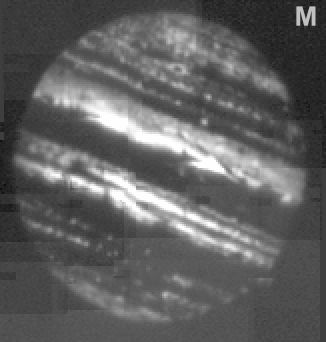
The camera has also been used to obtain Jupiter images which are being provided to Galileo investigators. In the near infrared the appearance of Jupiter changes dramatically with wavelength. At some wavelengths the appearance resembles that in the visible, with sunlight reflected from multiple cloud layers. In methane absorption bands the reflection from the lower clouds is suppressed and reflection from high clouds or high haze dominates. In the L' (3.8 micron) band auroral emission becomes significant. In the image below the entire auroral oval can be seen. Finally, in the M (4.8 micron) band the appearance is dominated by thermal emission coming from deeper in the atmosphere, through breaks in the clouds.


Here are some Jupiter images obtained October 5, 1999 UT in preparation for a stellar occultation by Jupiter. In these quick mosaics there has been no attempt at registration. I simply rely upon the offsets reported by the telescope. Also, there has been only a very limited attempt at selecting the best frames out of the set taken.
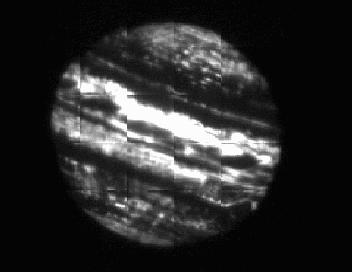
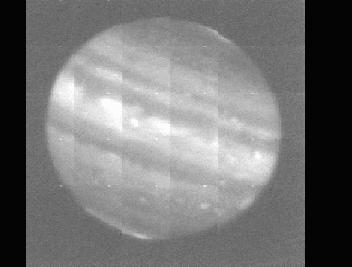
4.7 um 3.8 um

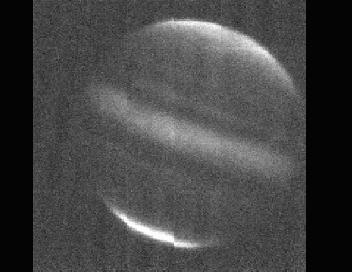
3.44 um 2.38 um
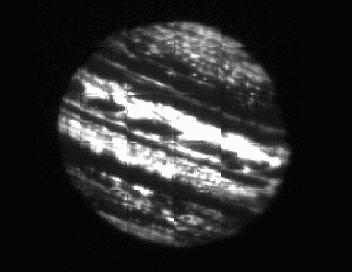
4.7 um
back to IoCam1 Recent Science Results
back to Robert Howell's home page
Last revised: May 18, 2000.